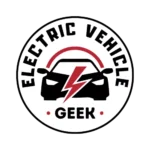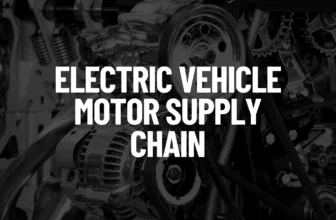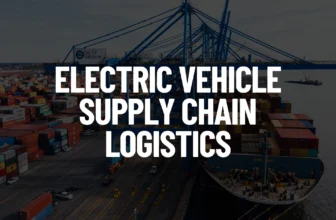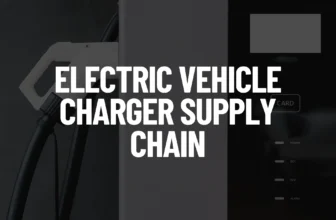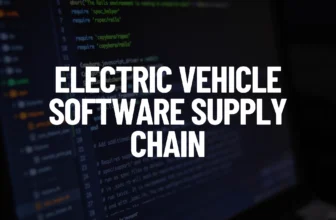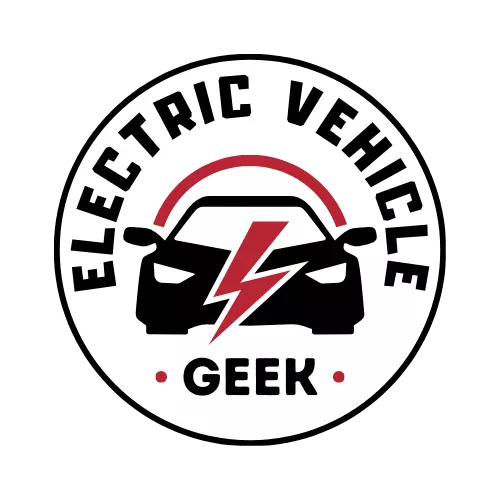The electric vehicle (EV) end-of-life (EOL) and recycling supply chain manages the disposal, recycling, and repurposing of EV components, particularly batteries, at the end of their lifecycle in the electric vehicle supply chain.
This sub-supply chain aims to reduce waste, recover valuable materials, and ensure environmental sustainability in the overall electric vehicle supply chain ecosystem.
Table of Contents
Environmental Impact of Unrecycled Electric Vehicle Parts
By recycling EV parts, we can significantly reduce environmental pollution, conserve natural resources, and promote a more sustainable lifecycle for electric vehicles.
| EV Part | Environmental Impact | Estimated Environmental Impact (%) |
|---|---|---|
| Batteries | Toxic chemical leakage, resource depletion, habitat destruction. | 40% |
| Electric Motors | Waste of copper, rare earth metals, and aluminum; resource depletion. | 15% |
| Inverters | Toxic material pollution, resource depletion. | 10% |
| Batteries’ Casing | Landfill waste, slow decomposition of plastic. | 5% |
| Power Electronics | Lead, cadmium contamination, resource depletion. | 5% |
| Cooling Systems | Leaks of harmful chemicals, soil and water contamination. | 5% |
| Vehicle Body Panels | Landfill waste, energy-intensive material production. | 5% |
| Tires | Non-biodegradable waste, environmental contamination. | 5% |
| Windshields | Glass waste, energy consumption in manufacturing. | 5% |
| Interior Components | Plastic and textile waste, non-biodegradable materials. | 3% |
| Environmental Impact of Left Unrecycled | Toxic chemical leakage, resource depletion, and habitat destruction. | 2% |
EV batteries, especially lithium-ion batteries, have the largest environmental footprint if not recycled compared to other electric vehicle parts. They contain toxic chemicals and rare minerals, and their disposal contributes significantly to pollution.
Electric Vehicle Battery Recycling Supply Chain
The electric vehicle battery recycling supply chain refers to the processes involved in collecting, transporting, processing, and reusing materials from used or end-of-life electric vehicle (EV) batteries.
The electric vehicle battery recycling supply chain is critical for reducing the environmental impact of EV batteries, conserving valuable resources, and promoting sustainability within the electric vehicle battery supply chain.
Key stages in the electric vehicle battery recycling supply chain include:
- Collection: Gathering used or defective EV batteries from vehicles, charging stations, or manufacturers.
- Transportation: Safely moving the batteries to recycling facilities, considering potential hazards associated with battery chemicals and components.
- Disassembly and Sorting: Batteries are disassembled to separate different materials, such as metals (cobalt, lithium, nickel), plastics, and other components. This process helps identify materials that can be reused or recycled.
- Material Recovery: Extraction of valuable materials like lithium, cobalt, nickel, and graphite, which can be refined and used to create new batteries or other products.
- Refining and Reuse: The recovered materials undergo refining processes to remove impurities and prepare them for production in new batteries or other technological applications.
- Second-life Use: Some EV batteries, before being fully recycled, may be repurposed for secondary uses, such as energy storage for homes or businesses.
- Final Recycling: Components that cannot be reused or repurposed are processed and recycled in a way that minimizes waste and environmental impact.
The goal of the EV battery recycling supply chain is to reduce the reliance on raw material extraction, lower carbon emissions, and ensure the safe disposal of hazardous substances, contributing to a circular economy in the electric vehicle sector.
Key Stakeholders in the EV Battery Recycling Supply Chain
- Automakers: Many auto manufacturers are dedicating space within their factories to recycling batteries and developing partnerships with third parties to support recycling efforts. They are also responsible for setting up recycling service outlets.
- Battery Manufacturers: Battery manufacturers, along with car manufacturers, are responsible for tracking every battery pack for reuse and recycling.
- Recycling Facilities: These facilities are essential for processing EOL batteries and recovering valuable materials.
Electric Vehicle Battery End-of-Life/ Recycling Options
When EV batteries reach the end of their useful life, there are several options for handling them:
- Remanufacturing: This involves restoring batteries to their original performance specifications, although it is the most stringent in terms of battery quality requirements.
- Repurposing: This extends the life of EV batteries by using them for secondary applications such as energy storage for grid systems or backup power. Second-life batteries typically start at 80% state of health (SOH) and reach end-of-life at 60% SOH.
- Recycling: This is the ultimate option for handling EOL EV batteries, closing the loop by recovering valuable materials. Recycling can involve various methods including direct recycling, hydrometallurgy, and pyrometallurgy.
- Disposal: Sending batteries to landfills is the least preferred option due to material loss, environmental risks, and lost economic opportunities.
Electric Vehicle Battery Recycling Processes
- Direct recycling involves disassembling batteries, perforating them to extract electrolyte solvents and salts, shredding the remaining material, and using physical separation processes to recover materials. The recovered cathode materials are then lithiated to produce rejuvenated cathode powder.
- Hydrometallurgy uses chemical treatments to extract valuable resources from the cathode.
- Pyrometallurgy is another method used for material extraction from end-of-life batteries, though it can generate a significant amount of GHG emissions.
Importance of Recycling Electric Vehicle Battery
- Material Recovery: Recycling reintroduces recovered materials back into use, reducing the consumption and mining of primary raw materials. It also helps avoid landfill disposal.
- Circular Economy: Recycling is a fundamental aspect of the circular economy. It contributes to sustainability by closing the loop and minimizing waste.
- Supply Chain Stability: Widespread battery recycling can create a more stable domestic source of materials for battery production and reduce the demand for raw materials.
Challenges and Considerations
- Lack of Standardization: There is a lack of battery pack design standardization, which can hinder efficient disassembly and recycling.
- Collection Systems: Effective collection systems are needed to ensure that EOL batteries are properly routed to recycling facilities.
- Automation: Much of the current recycling process is manual and time-intensive; automation is key to scaling up this capability and keeping it cost-effective.
- Logistics: Accumulating, depositing, and transporting EV batteries for recycling can present complex and expensive logistical issues.
- Environmental Concerns: Improper handling of EOL batteries can cause hazards such as toxic emissions and fires.
Policy and Regulation
- Extended Producer Responsibility: Some regions have implemented policies where manufacturers are responsible for the recycling and utilization of used batteries.
- Targets and Standards: Regulations and standards are needed for the reuse and transboundary movement of second-hand batteries, as well as for setting targets for battery recycling.
Conclusions
The EV EOL and recycling supply chain is critical for ensuring the sustainability of electric mobility. By properly managing EOL batteries through reuse and recycling, this sub-supply chain can minimize environmental impacts, reduce reliance on raw materials, and contribute to a circular economy.
As an expert in the electric vehicle end-of-life and recycling supply chain, your insights and expertise are invaluable in enhancing the quality and depth of this blog.
I invite you to collaborate by sharing your in-depth knowledge, real-world experiences, and case studies. Together, we can explore the complexities of the EV end-of-life process and recycling supply chain, identifying actionable insights, innovative solutions, and best practices that will drive the industry toward greater sustainability, efficiency, and circular economy practices.
If you find that my content has added value to your work within the EV recycling supply chain, a letter of recommendation would be deeply appreciated. Your support will help refine my contributions, furthering the growth and optimization of the EV recycling ecosystem.
Let’s work together to shape the future of the EV end-of-life and recycling supply chain, expanding our collective expertise to accelerate the transition to a more sustainable and responsible EV industry.
Feel free to reach out to me directly at james@electricvehiclegeek.com.
Thank you for your engagement and for being a key part of this journey!
